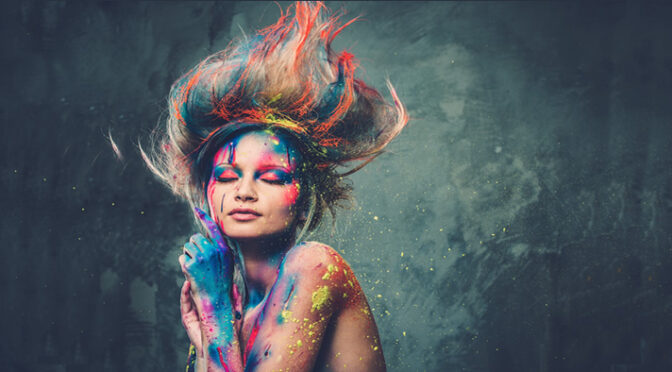Everyone has a color they energetically relate to. Even if you don’t have a favorite color, there is probably a shade out there that you’re most drawn to. We often blend our styles and personas with those colors in the form of personal expression. It can be hair or nail color, the color of our clothes or accessories, or even the color of your room or office space.
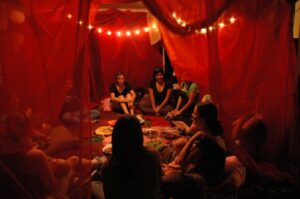
There may be a color that makes you feel warm and happy when you see it, while another color may make you feel anxious or annoyed. While some colors tend to have a certain effect on most people, the results can occasionally vary from person to person. Here are the most common psychological effects on humans, for all the colors of the rainbow!
Red – Red corresponds to the base or root chakra. Most of us can agree that red is known as the color of passion and love, but surprisingly it can also be used on the other end of the spectrum; to represent aggression and war.
It is the color that grabs our attention before all others. It imbues a sense of heightened awareness and importance, such as use of a red carpets for VIPs. It also has the effect of appearing closer than it actually is, hence it’s use in traffic lights and stop signs all over the world.
Lighter shades of red may emphasize its energetic aspects – including youthfulness, impulsivity and risk taking – while darker shades emphasize power, and even durability, like a brick wall.
Orange – Orange still holds much of the powerful energy of the color red, while adding some of the warmth and softness from yellow. Like red, it pulls attention from a distance and has very high visibility.

Orange also increases hunger and appetite like yellow and red do, which is why all three colors are so commonly used by the food industry. Orange is often associated with excitement, enthusiasm, stimulation, change, and playfulness. It can be used to subtly draw attention and excitement to something, without adding too much rashness or severity.
Orange relates to the sacral chakra and to our gut instinct.
To some of us, it can offer emotional strength in difficult times. It’s energy is uplifting, optimistic and rejuvenating to the spirit, thus helping us bounce back from despair, grief and disappointment.
Though, it depends on which color orange you use. Dark-orange can represent treachery and distrust, while red-orange relates to desire, aggression and domination. Golden-orange often stands for esteem, intelligence and wealth while the color Peach tends to be soothing, friendly and softly pleasing to the eyes.
Yellow – Associated with the solar plexus, yellow is the color of the extroverts. It exudes warmth, happiness, cheerfulness, friendliness, positivity and confidence. It inspires creativity, wealth and prosperity. It is also considered the color that most signifies intelligence, insight and increased mental activity.
Studies have shown that the color yellows actually helps to activate the memory centers of our brain, encourages better communication, enhances vision and eyesight, builds self-confidence, and can even help stimulate our nervous system.
Though, it does have some negative aspects as well. If yellow is overused, it can have a disturbing effect on children.
For example, it is a proven fact that babies cry more in rooms painted yellow. Overuse of the color can produce a lack of focus and make it harder to complete a task. It can also cause people to become critical and demanding.
Too little yellow can cause feelings of fear, insecurity, isolation and lower self-esteem. A complete lack of yellow has been shown to cause someone to act more rigid, defensive or possessive.
Green – The color green has long been associated with healing and is believed by many to be the most restful and relaxing color for the human eye to view. It is the color of life, of renewal, of harmony and tranquility, of 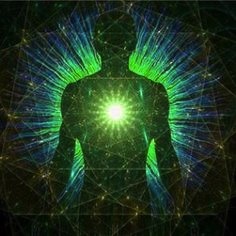 nature, growth, fertility, freshness and safety. Although, on the other end of the spectrum it can also be associated with money, financing, greed, jealousy and envy.
nature, growth, fertility, freshness and safety. Although, on the other end of the spectrum it can also be associated with money, financing, greed, jealousy and envy.
The color green corresponds with the heart chakra, so it is also associated with love. Not always romantic love, but also love of life, home, family and friends.
When we surround ourselves with the color green, we are enclosed in a homemade sanctuary of sorts, where we can feel safe and secure. This is one of many reasons why having even just a small garden can make a big difference to the comfort of any home.
Though, it is important to be mindful of overuse of green as well. Too much green can cause people to become slow, lazy, depressed, moody and lethargic; while too little green can produce feelings of apathy and fear of rejection.
Blue and Indigo – Yes, there are many variations of the color blue. Just as many as with all the other colors, but for some reason we tend to pay more attention to the hues of our blues than to any other color. A light, pastel blue, aka ‘baby blue’ is associated with the throat chakra. It has a soothing effect and has been known to enhance creativity, poise and eloquence.
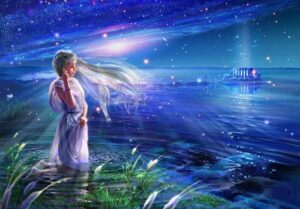 A slightly darker Sky-Blue is known to be one of the calmest and most soothing colors as well. It’s been said to inspire peace between enemies and even helps people overcome mental obstacles.
A slightly darker Sky-Blue is known to be one of the calmest and most soothing colors as well. It’s been said to inspire peace between enemies and even helps people overcome mental obstacles.
However, not all blues are serene and sedate. The darker hues, ‘Indigo’ or ‘Royal Blue’ is associated with the 3rd eye chakra. It is linked with conservatism and responsibility. Although it appears to be cool, calm and collected, it is the color of the non-emotional worrier, with repressed feelings, pessimism and hypocrisy.
Dark blue is a serious masculine color that represents knowledge, logic, integrity, and power. Probably why it is so often used in the corporate world.
Purple/Violet – Purple is a combination of the calm stability of blue and the fierce energy of red. It is often associated with royalty, nobility, luxury, power, and ambition. Purple also represents meanings of wealth, extravagance, wisdom, dignity, devotion, peace, pride, mystery, independence, and magic.
The color purple is a rarity in nature and as a result is often seen as having sacred meaning. Lavender, orchid, lilac, and violet flowers have always been considered delicate and precious.
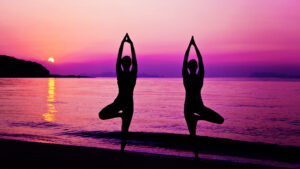
The color has many effects on the mind and body, including uplifting the spirit, calming the nerves, silencing the mind, enhancing the sacred, increasing nurturing tendencies and sensitivity, as well as encouraging imagination and creativity.
Purple is associated with the crown chakra, and as such, with spirituality, the sacred, higher self, fulfillment, and vitality. Light purple hues represent feminine energy and delicacy, as well as romantic and nostalgic feelings. They also suggest riches and royalty.
Dark purple hues, especially if overused, can evoke feelings of gloom, sadness, and frustration, so try to use the color sparingly.
So, after reading through them all, please share your thoughts! What is your favorite color of the rainbow? How well does it suit your personality?

